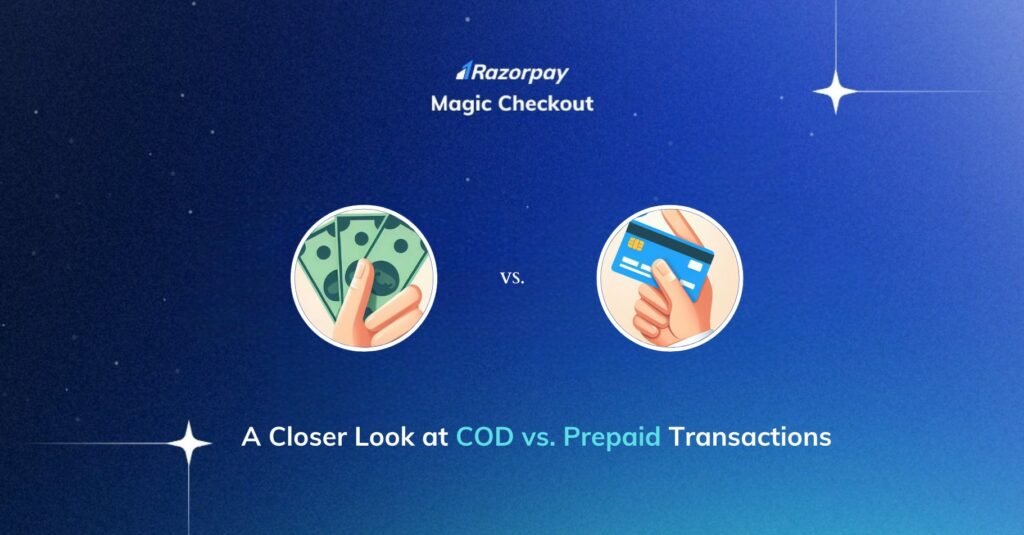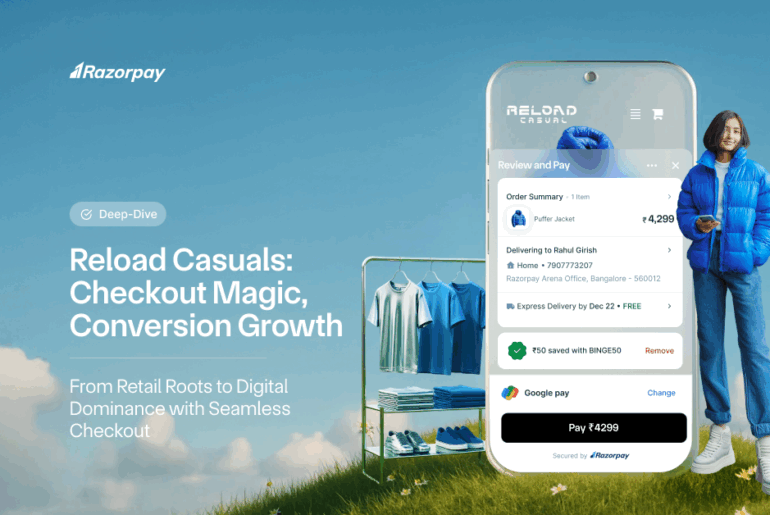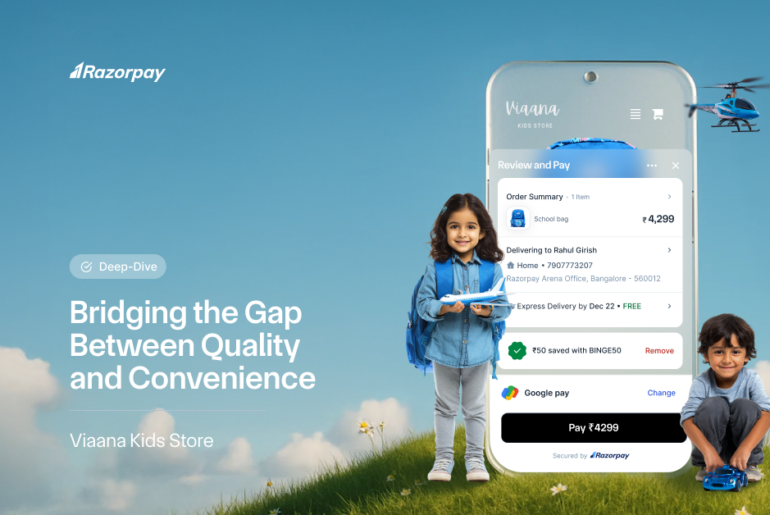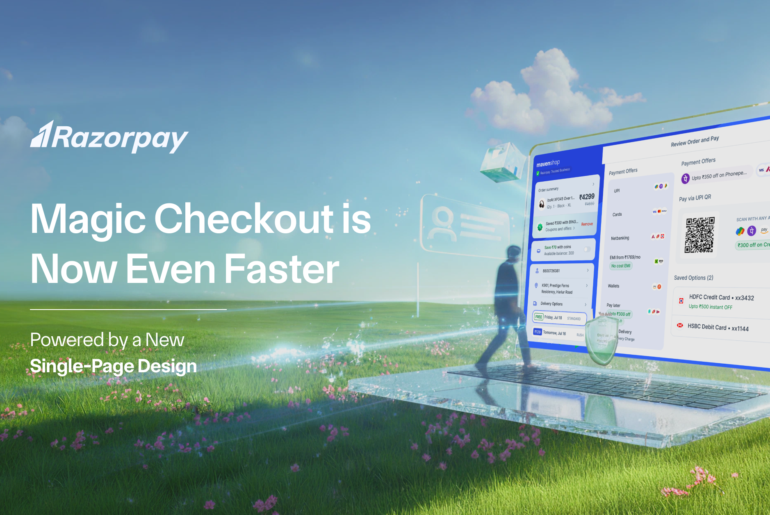Amidst the vast landscape of online shopping, a pivotal decision confronts both shoppers and stores: choosing between Cash on Delivery (COD) and Prepaid payment methods. The debate between COD vs. Prepaid transcends mere transactional preferences; it delves into the very heart of convenience, security, and trust in the e-commerce landscape. As we navigate through the intricacies of COD vs. Prepaid, let’s unravel the nuances, advantages, and potential pitfalls associated with each payment method.
Cash on Delivery: Bridging Trust and Convenience
 In India, Cash on Delivery accounts for over 65% of e-commerce transactions, making it a significant and influential force in the Indian e-commerce market. Let’s find out the pros and cons of this payment method.
In India, Cash on Delivery accounts for over 65% of e-commerce transactions, making it a significant and influential force in the Indian e-commerce market. Let’s find out the pros and cons of this payment method.
Pros:
Trust Building: In an era plagued by online scams and fraudulent transactions, Cash on Delivery emerges as a beacon of trust and reliability. With Cash on Delivery, customers enjoy the assurance of paying only upon receiving the product, alleviating concerns about potential scams or counterfeit goods. For example, imagine a customer in a Tier 2 city who is hesitant to make online payments due to security concerns. By offering COD the e-commerce store earns the trust of this customer, thereby expanding its customer base.
Wider Customer Reach: Particularly in Tier 2 and Tier 3 cities where apprehensions about digital payments persist, Cash on Delivery serves as a vital conduit for businesses to tap into diverse markets and connect with a broader customer base. For instance, a customer residing in a remote village may lack access to digital payment methods. By providing COD as an option, businesses can cater to such customers, thereby enhancing inclusivity and expanding their market reach.
Stimulating Impulse Buying: By simplifying the purchase process and eliminating the need for upfront payment details, Cash on Delivery fosters impulse buying among online shoppers. The seamless checkout experience encourages spontaneous purchases, resulting in faster checkouts and heightened consumer engagement. Consider a scenario where a customer is browsing an online store and comes across a limited-time offer. With COD, the customer can make a quick purchase without the hassle of entering payment details, thus capitalizing on the impulse to buy.
Cons:
High Returns: One of the significant drawbacks of Cash on Delivery is its propensity for high Return to Origin (RTO) rates. With no upfront investment from buyers, COD orders are more susceptible to returns, leading to increased logistical complexities and operational overheads for businesses. High RTO rates not only impact profitability but also erode customer trust and satisfaction, as frequent returns can indicate dissatisfaction with product quality or inaccurate product descriptions.
Additional Costs: Despite its convenience, Cash on Delivery transactions entail additional expenses for businesses. Delivery partners often levy extra fees on COD orders to cover operational costs and manage returns, thereby increasing the overall cost of order fulfilment. Additionally, businesses incur logistical costs associated with handling cash payments and processing returns, further impacting profitability.
Restricted Cash Flow: Unlike prepaid transactions that ensure immediate fund transfers to merchants, Cash on Delivery payments introduce delays in cash flow, hindering daily operations and posing challenges in managing finances effectively. For businesses, delayed cash flow can impede growth opportunities and strain operational resources, especially during peak seasons or promotional campaigns.
Refund Challenges: Processing refunds for Cash on Delivery orders entails a cumbersome and time-consuming process. From obtaining bank account details from customers to initiating manual payouts, the refund process is fraught with challenges, often resulting in delays and administrative burdens for online businesses. Additionally, refund policies for COD transactions may differ from those for prepaid transactions, further complicating the process and potentially leading to customer dissatisfaction.
Prepaid: Efficiency and Security
 The prepaid payment method offers unique advantages, including enhanced delivery convenience, as recipients need not be present at the time of delivery. Payments being made in advance enable items to be left securely with a reception or designated area. Now, let’s explore the pros and cons of this payment method.
The prepaid payment method offers unique advantages, including enhanced delivery convenience, as recipients need not be present at the time of delivery. Payments being made in advance enable items to be left securely with a reception or designated area. Now, let’s explore the pros and cons of this payment method.
Pros:
Streamlined Transactions: Prepaid payments offer a seamless and expedited checkout experience, enabling customers to complete transactions swiftly and securely without the need for cash exchange or additional paperwork. By integrating secure and best payment gateway for India and authentication protocols, businesses can streamline the checkout process and enhance user experience, thereby reducing cart abandonment rates and driving conversion.
Enhanced Security: With robust payment gateways and stringent authentication protocols, prepaid transactions offer heightened security and protection against fraud, instilling confidence in buyers and bolstering trust in online transactions. By leveraging encryption technology and fraud detection measures, businesses can safeguard sensitive payment information and mitigate risks associated with cyber threats and fraudulent activities.
Improved Cash Flow: Unlike COD payments that introduce delays in fund transfers, prepaid transactions ensure immediate settlement of funds, facilitating smoother cash flow management and operational efficiency for businesses. By leveraging automated payment processing systems and real-time transaction tracking tools, businesses can optimize cash flow management and allocate resources effectively, thereby enhancing financial stability and scalability.
Cons:
Limited Accessibility: While prepaid payments offer convenience and security, they may alienate segments of the population with limited access to digital payment methods or those who prefer the flexibility of cash-based transactions. For businesses targeting diverse customer demographics, offering multiple payment options, including COD and prepaid, is essential to ensure inclusivity and accessibility.
Buyer Apprehensions: Some shoppers may harbour reservations about prepaying for goods or services, fearing potential fraud or dissatisfaction with their purchases. Overcoming these apprehensions and building trust in prepaid transactions remains a challenge for businesses. By implementing transparent refund and return policies, providing secure payment options, and offering incentives such as discounts or rewards, businesses can alleviate buyer concerns and foster confidence in prepaid transactions.
Boost Prepaid Orders with Razorpay Magic Checkout
While offering diverse payment options, including Cash on Delivery, remains essential, businesses increasingly recognize the value of strengthening their prepaid order share. This shift is crucial for mitigating the challenges associated with COD transactions and maximizing the benefits of prepaid transactions.
Razorpay Magic Checkout emerges as a powerful solution to facilitate this transition. By leveraging Magic Checkout, businesses can seamlessly convert COD orders to prepaid, reaping the advantages associated with prepaid transactions while minimizing the drawbacks linked to COD.
One effective strategy involves targeted outreach to customers who opt for COD orders. Through personalized WhatsApp messages, businesses can incentivize customers to convert their COD orders to prepaid by offering discounts or incentives. These messages include a Razorpay payment link, enabling customers to make prepayments and streamline the transaction process conveniently. Additionally, merchants can consider implementing an extra COD fee as a deterrent for COD orders, encouraging customers to choose prepaid options and further optimizing their payment processes.
By prioritizing prepaid orders and leveraging the capabilities of Magic Checkout, businesses can enhance their cash flow, reduce return rates, and simplify operational processes.
For businesses looking to provide Cash on Delivery as an option for their customers, Razorpay Magic Checkout offers an additional layer of support. With Magic’s RTO Intelligence, businesses can now efficiently screen and prevent COD orders with a high likelihood of return. This comprehensive solution underscores Magic Checkout’s versatility and capability to address various challenges, ensuring a seamless experience for both businesses and customers.
With Magic Checkout, businesses can navigate the COD vs. prepaid dilemma with confidence, ultimately optimizing their payment strategies and driving sustainable growth in the competitive e-commerce landscape.
Navigating the COD vs. Prepaid Conundrum
As we unravel the complexities of COD vs. prepaid, it’s evident that informed choices are paramount in shaping your e-commerce success. Whether you seek to fortify trust with COD or streamline transactions with prepaid, understanding your options empowers strategic decision-making. For those aiming to bolster prepaid shares, Razorpay Magic Checkout is ready to be your indispensable ally. Seamlessly converting COD to prepaid, Magic Checkout elevates your payment ecosystem, enhancing efficiency and customer satisfaction.



